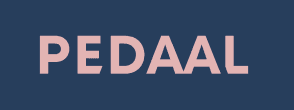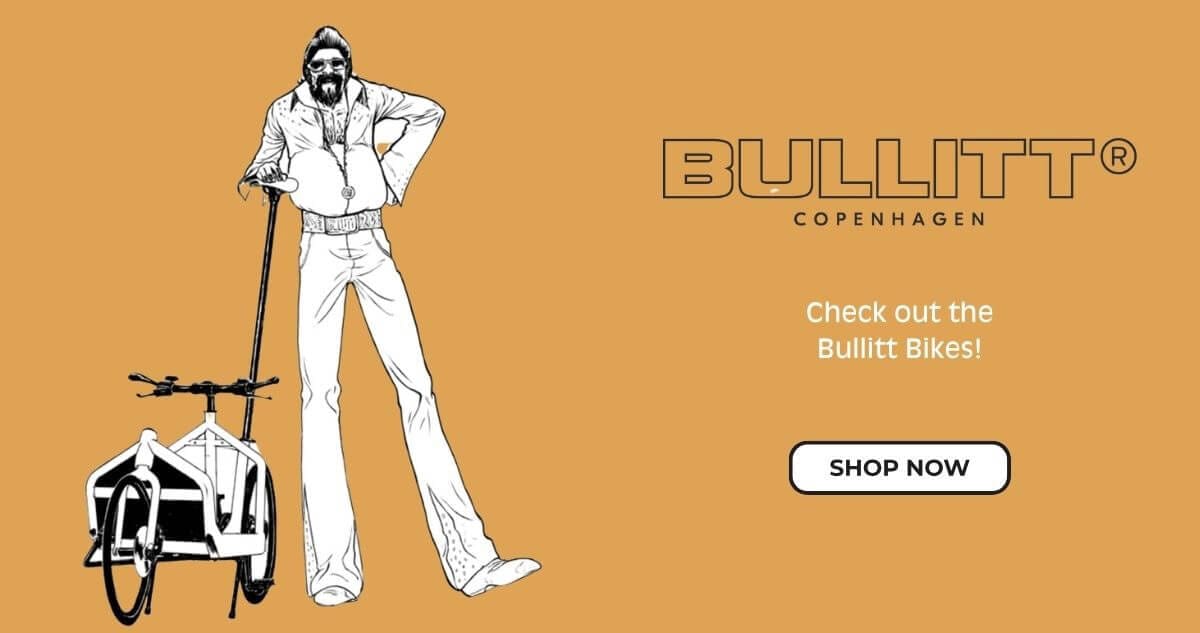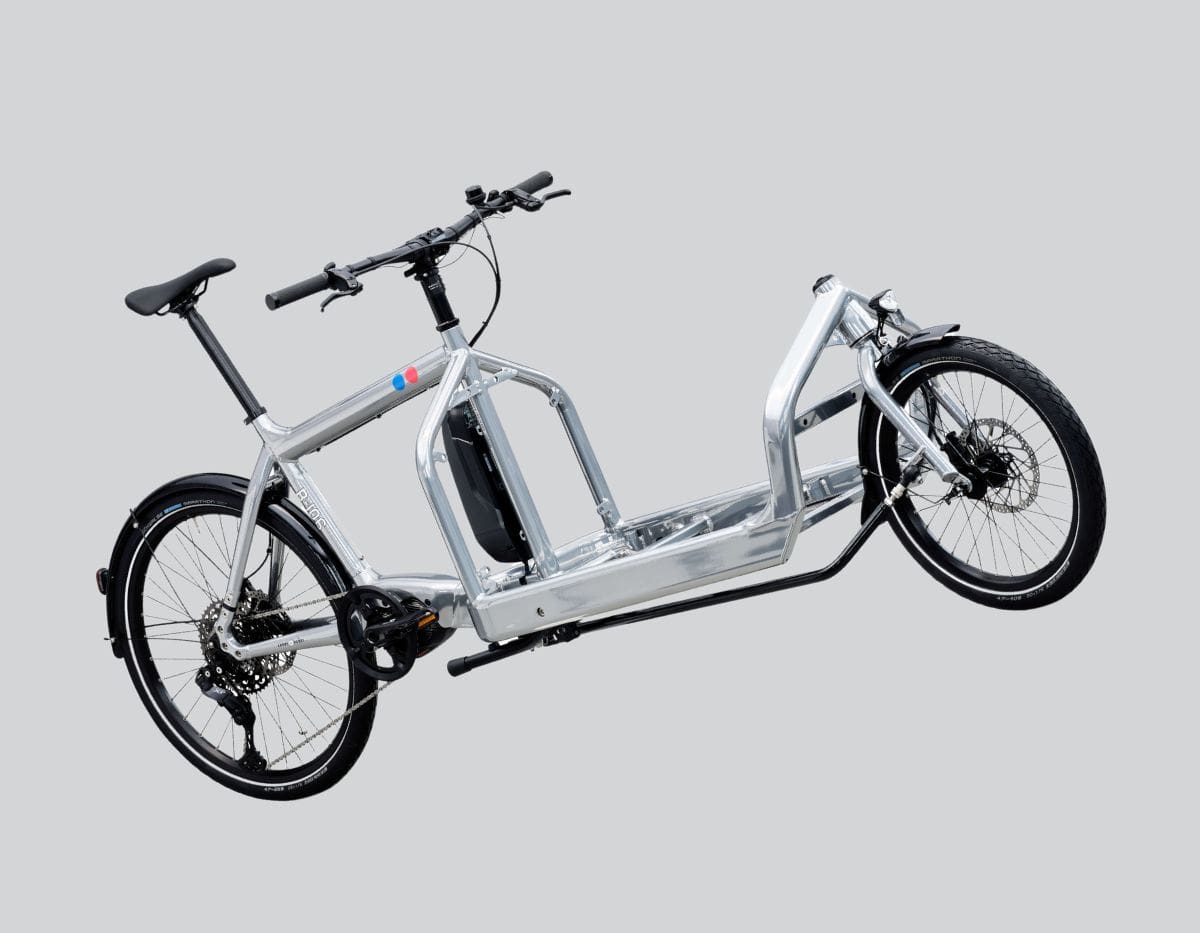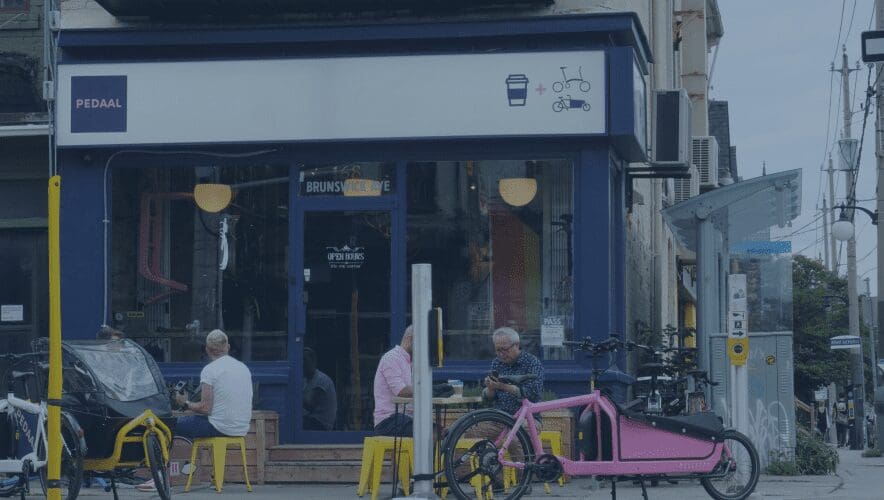Welcome to the Cargo Bike Nation’s Cup – the world’s fiercest competition in front-loading urban mobility. It’s not just a friendly match; it’s a full-blown showdown where national pride and engineering collide. And like hockey itself, the strongest teams tend to hail from Northern and Nordic countries. Representing Denmark: the legendary Bullitt, the original cargo bike from the once mean-streets of Copenhagen. Holland puts forth Urban Arrow, a newer generation born from heavyweight Dutch cycling culture. Germany sends in Riese & Müller, a big-spending team with tech to spare. And from the USA comes Trek, the scrappy underdog, making its first serious play with the Trek Fetch. Ready?
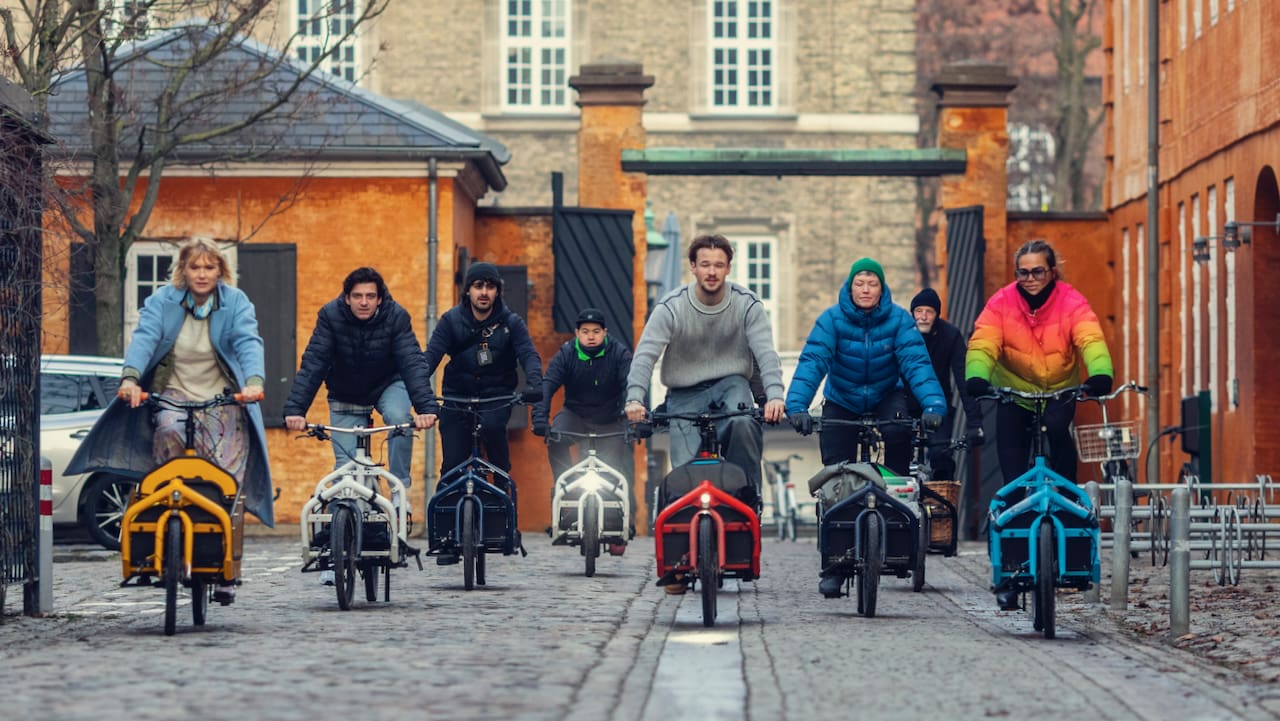
But before we start skating, let’s set the ice. Cargo bikes don’t all play the same game. Some are built for the last mile – those short trips that are too far to walk but too close to drive. Some are built for the last mile and beyond – bikes that can do daily work but stretch into weekend escapes. And some are built for beyond the last mile – machines with the range and suspension of SUVs, marketed to riders chasing adventure more than transport. The trick is knowing which team is actually playing your game.
Safety in the Box
Every hockey player knows the importance of body armour; pads, helmets and visor. Front-loading cargo bikes come equipped with their own kind of armour: a strong, impact-resistant cargo box that surrounds passengers, especially kids. This safety cell absorbs shocks and collisions, keeping those inside safe and secure.
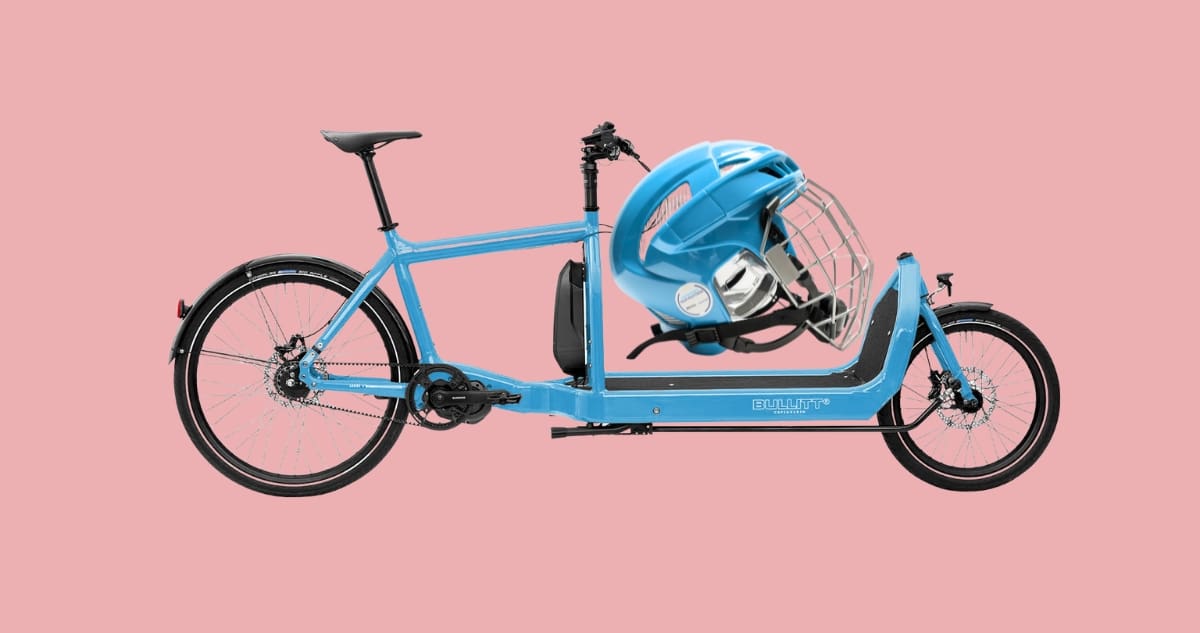
Unlike longtail bikes where kids sit exposed on the rear rack, front-loaders provide real safety. Most car accidents with cyclists occur from the rear, and most fatalities too. Longtails, alas, are not long on safety. Every bike in this lineup earns points for suit-up safety.
Fast Break: Bullitt on the Rush
Speed, precision, and control win games. This is also true for cargo bikes. And, this is where Bullitt leads. Born in 2006 from a need to cut through traffic, hop curbs, and squeeze through tight city corners, a Bullitt is a sub-60lb machine that dances through gridlock.
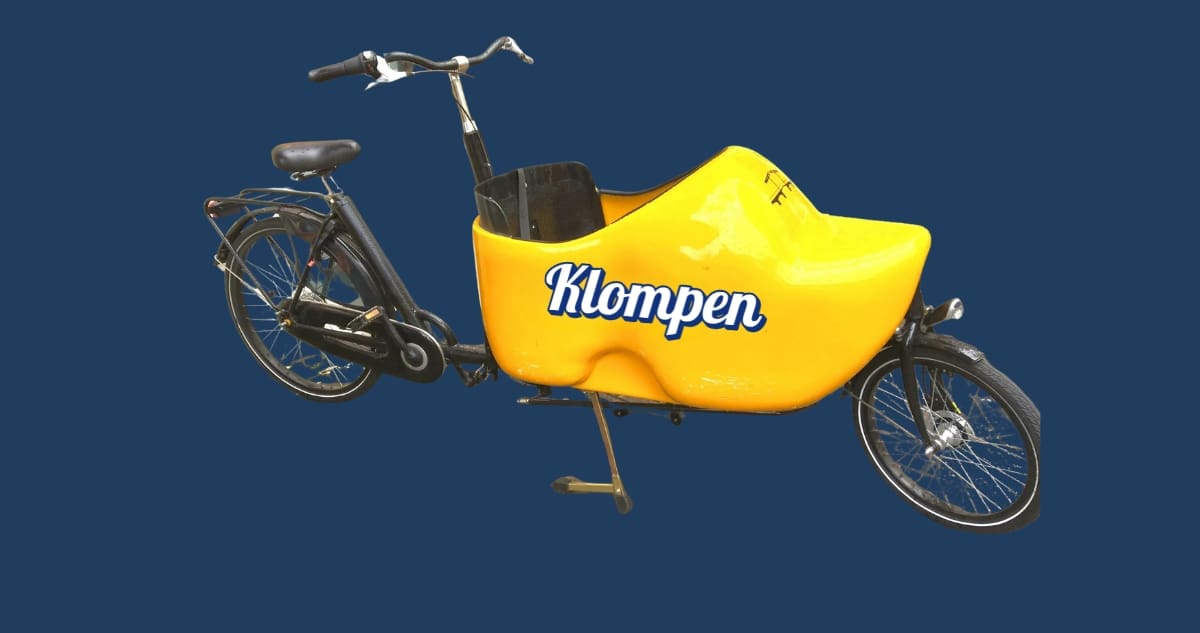
Compare that to the early steel-and-wood cargo bikes from Holland – 145lb bruisers more suited to cruising Holland’s bike highways than handling tight gritty turns. In 2012, Urban Arrow appeared and put Dutch cargo bikes on a weight loss plan, dropping the weight to 110lbs with an aluminum frame and EPP box. But it still klomps around like a wooden shoe. Bullitt’s nimble design reflects a country where cargo bike design was forged without the luxury of Holland’s bike lanes. This gritty origin story explains why a Bullitt’s design works so well outside of Denmark too.

And here’s where the categories begin to matter: Urban Arrow is a last-mile bike through and through. It’s gadget-free, it holds a ton of kids, and it’s built for stability on short, everyday trips. It’s a terrific bike. But it’s heavy, hard to lift up curbs, and in no way designed for escapes beyond the last mile. The Bullitt, by contrast, was designed for daily courier work – the most punishing version of the last mile – but because it’s so light and stiff, it also stretches into the “last mile and beyond.”
Ditch The Zamboni
Here’s the truth: the North American bike industry overwhelmingly builds bikes for beyond the last mile. That’s why so many models are heavy on suspension, giant batteries, and gadgetry. They’re designed like SUVs, not city tools. Which means maintenance is higher, weight balloons, and the ride feels more like piloting a vehicle than riding a bike.
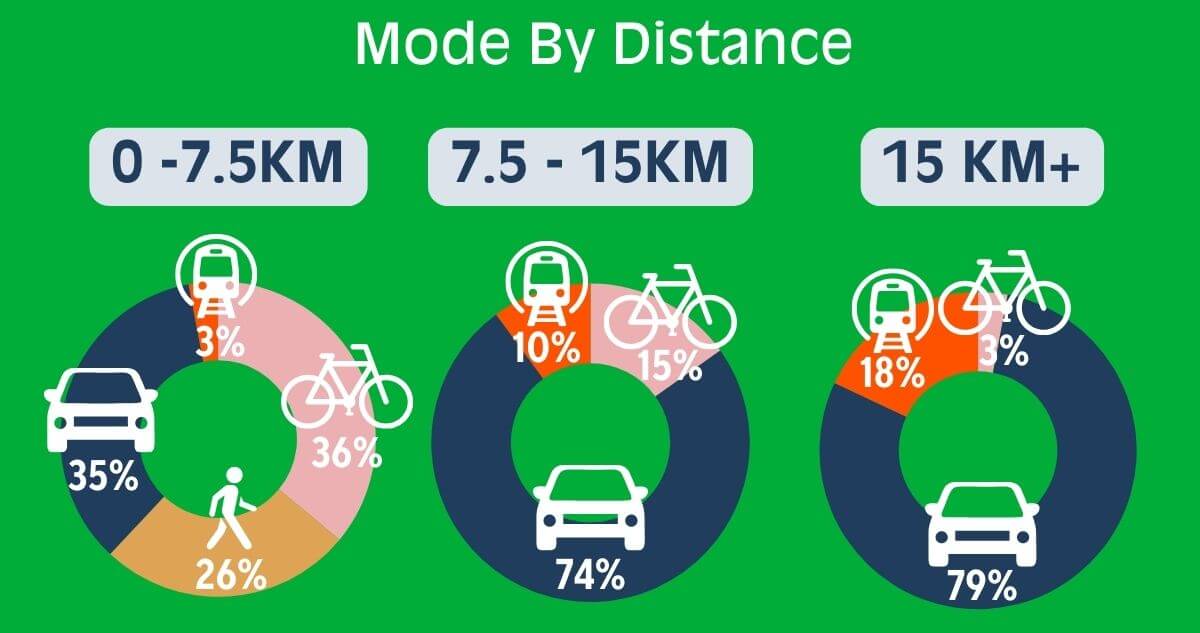
Take Riese & Müller. Their Load and Transporter series are brilliantly engineered, but they’re sold like Land Rovers to city dwellers: full of features that you could use, but rarely do. Dual batteries delivering 200km of range? Front and rear suspension? Impressive, yes. Necessary for the last mile? Not really. Most city riders rarely exceed 15km in a day, and Dutch research (see more here) shows that once distances creep over 7.5km, a car is almost always faster anyway. Which means these bikes aren’t designed for trips that replace cars. They’re designed for aspirational escapes – weekend tours, gravel grinds, off-road detours. That’s “beyond the last mile.”
Frames that Split
The frame tells the story. Bullitt uses a single-piece alloy body: strong, narrow, and stiff in the corners. That one-body design improves ride quality, keeps maintenance low, and avoids the risks that come with splitting frames. Urban Arrow’s two-piece body is bolted together – easier for shipping, but introducing weak points, as Babboe’s massive recall showed.
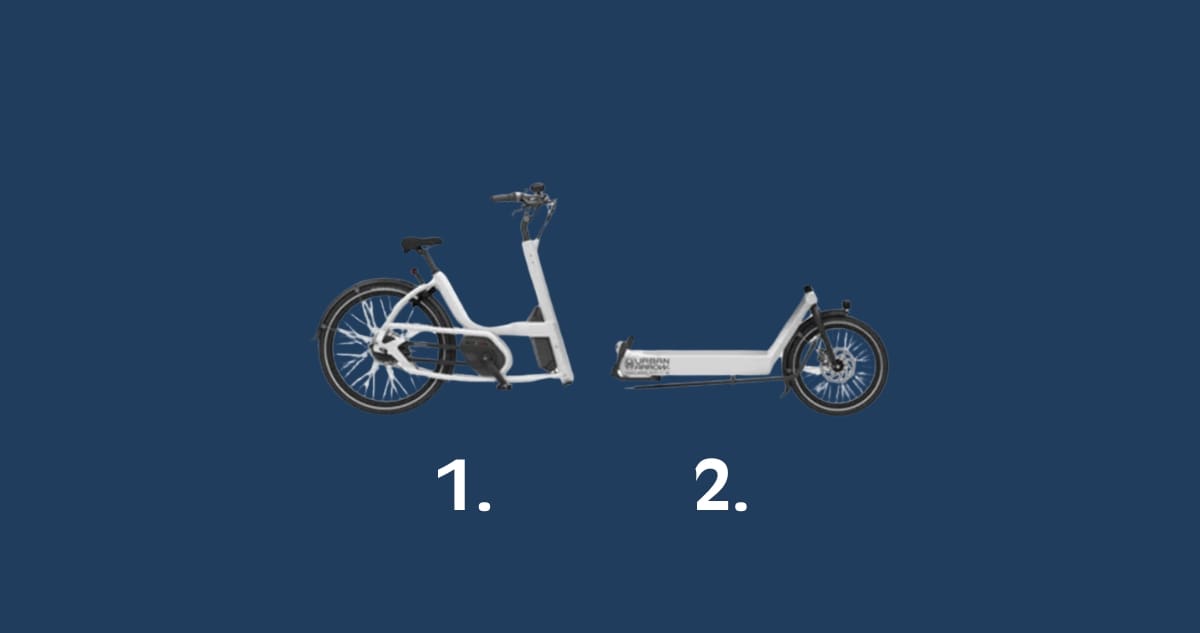
Riese & Müller go further, cutting their frames into three sections to accommodate suspension. But here’s the problem: splitting a frame always adds trouble, and cargo bikes aren’t downhill mountain bikes.
Suspending the Rider vs. Suspending the Bike
This is where it helps to distinguish between suspending the rider and suspending the bike. Early mountain bikes raised this same question. If the goal is comfort, you only need to suspend the rider. A suspension seatpost or stem solves this. It absorbs bumps, is light, inexpensive, and very low-maintenance. But if you suspend the whole bike, you’re doing it to keep the machine itself level while flying over extreme bumps at high speeds. That is hardly the conditions a cargo bike faces. Beyond the last mile, bikes like the Riese and Muller were designed for gravel roads, not downhill mountain biking.
Redshift Sports ShockStop Endurance Suspension Seatpost – Bullitt
A suspension fork on a front-loading cargo bike doesn’t behave the way most people think. In mountain biking, the fork sits directly under the rider’s weight, so every bump is absorbed in line with the rider’s mass. With a front-loader, the cargo rests behind and below the fork’s travel path, which means the fork’s movement barely cushions the load. Rear suspension may smooth things out for the rider, but the jury is still out on how much front suspension does for the cargo. When people describe their Riese & Müller as “comfortable,” it’s almost always the rider speaking -not the kids. And the same rider comfort can be achieved with a simple suspension seatpost, without splitting the frame, adding moving parts, or carrying extra weight.
That’s why the Bullitt takes a different approach. Its single-body frame is stronger and stiffer, avoiding the pitfalls of split designs while keeping maintenance low. Pair it with rider- or cargo-focused comfort solutions, and you get a bike that’s lighter, tougher, and better engineered for where bikes should be made to do their best work: the last mile.
Cargo Bikes Master the Quick Shift
What we’re trying to say is that cargo bikes are not SUVs. They’re made to master short trips. And, when you consider that over 50% of North American car journeys are under three miles, this is exactly the gridlock that a cargo bike slices through. Studies show that a city cyclist who lives and works in the ‘last mile’ rarely exceeds 15km in a day of riding. In other words, you may be doing a lot of trips, but overall mileage is generally low. Your cargo bike does the majority of trips. Your car does the majority of annual mileage. It’s the trips that matter.

Now, consider that even the smallest battery gives a rider 60km of range. With that in mind, range anxiety becomes more a sales-pitch than a real concern. For perspective, here in Toronto, FedEx rides their Bullitt E6100’s all day and only accumulate an average daily mileage of 35km. One (comparatively small) 418W battery does the trick. So, if for some reason you commute is over 30km – which is amazing but also exceptional – then you can still charge the battery at the office to 80% in just two hours. In short, for most urban families or businesses, even the most basic mileage a battery provides (combined with short charging times) is all you need.
From Rookie to Veteran: A Cargo Bike That Grows With You
Most front-loaders brands assume you’re carrying kids. But what if you’re not? Here is where Bullitt isn’t chasing the puck. Unlike all cargo bikes compared here, a Bullitt has the longest lifetime value. You could buy one before kids, during kids, after kids – or no kids whatsoever! You see, when the cargo bike moved from Denmark to Holland it was because the Dutch saw its use for carrying kids. After this, nearly every cargo bike by default has been a kid carrying machine. And, like any minivan also made for kids, it usually gets bought when the kids are borne and sold when the kids grow up. You could use it after the kids grow up, but they tend to be so heavy they ride like a, well, minivan.
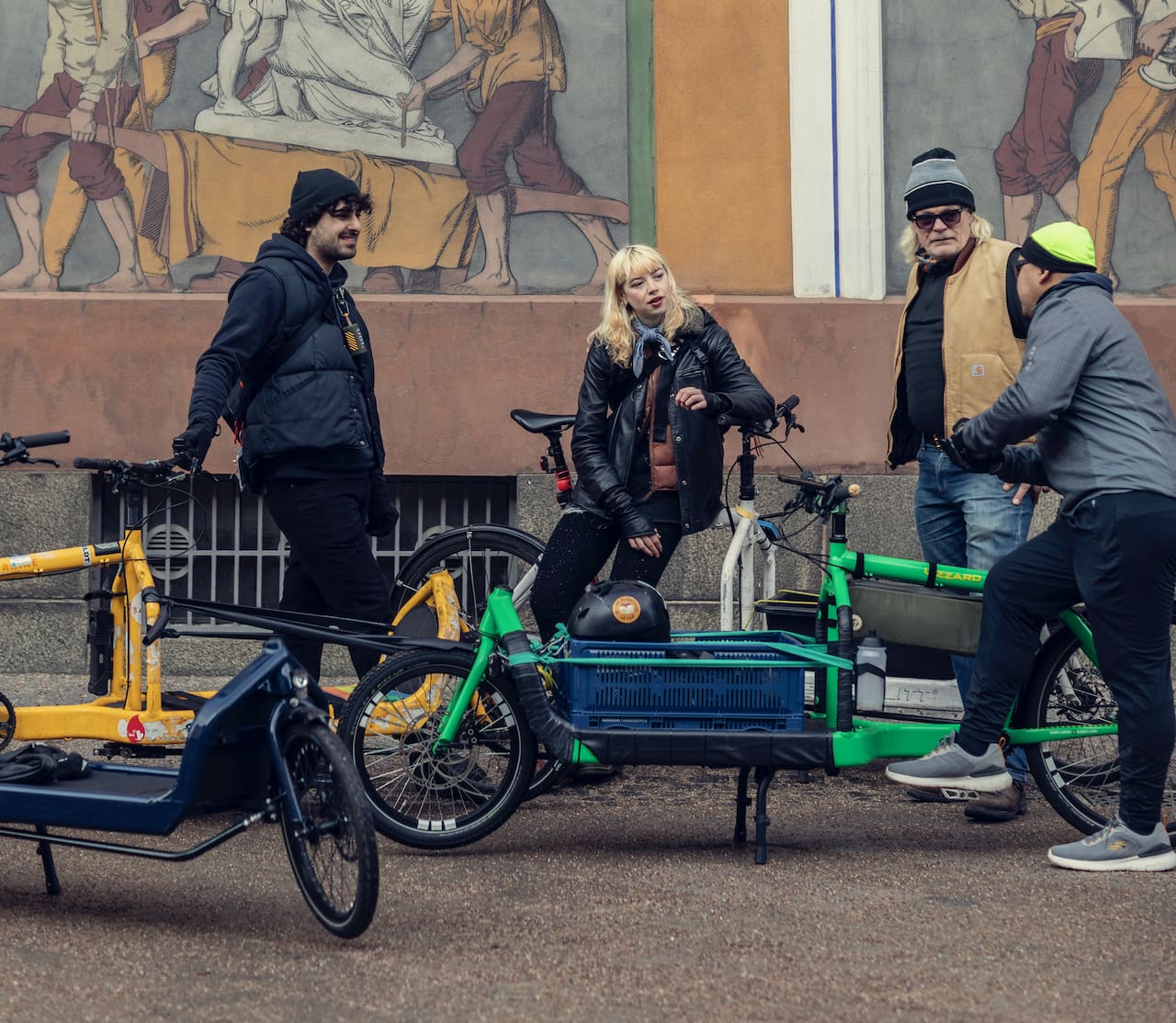
A Bullitt is quite different. As seen, it is a lightweight bike that is so fun to ride on its own that many prefer it to a “regular bike.” It becomes your regular bike. And, unlike any other regular bike, it can carry groceries, big trips to the Home Hardware, or a BBQ and cooler for weekend gatherings at the park. A Bullitt, in other words, grows with you and not just your kids.
Playing Every Position
One overlooked element in cargo bike design is rider posture—and it matters more than most think. A Bullitt is one of the only front-loaders that offers a full range of riding positions. Want that upright, easygoing “sit-up-and-beg” posture of an Urban Arrow? You’ve got it. Prefer a forward-leaning, aggressive stance like a FedEx courier threading traffic? Also an option. (It’s no accident Bullitts are the bike of choice for DHL and FedEx fleets worldwide).
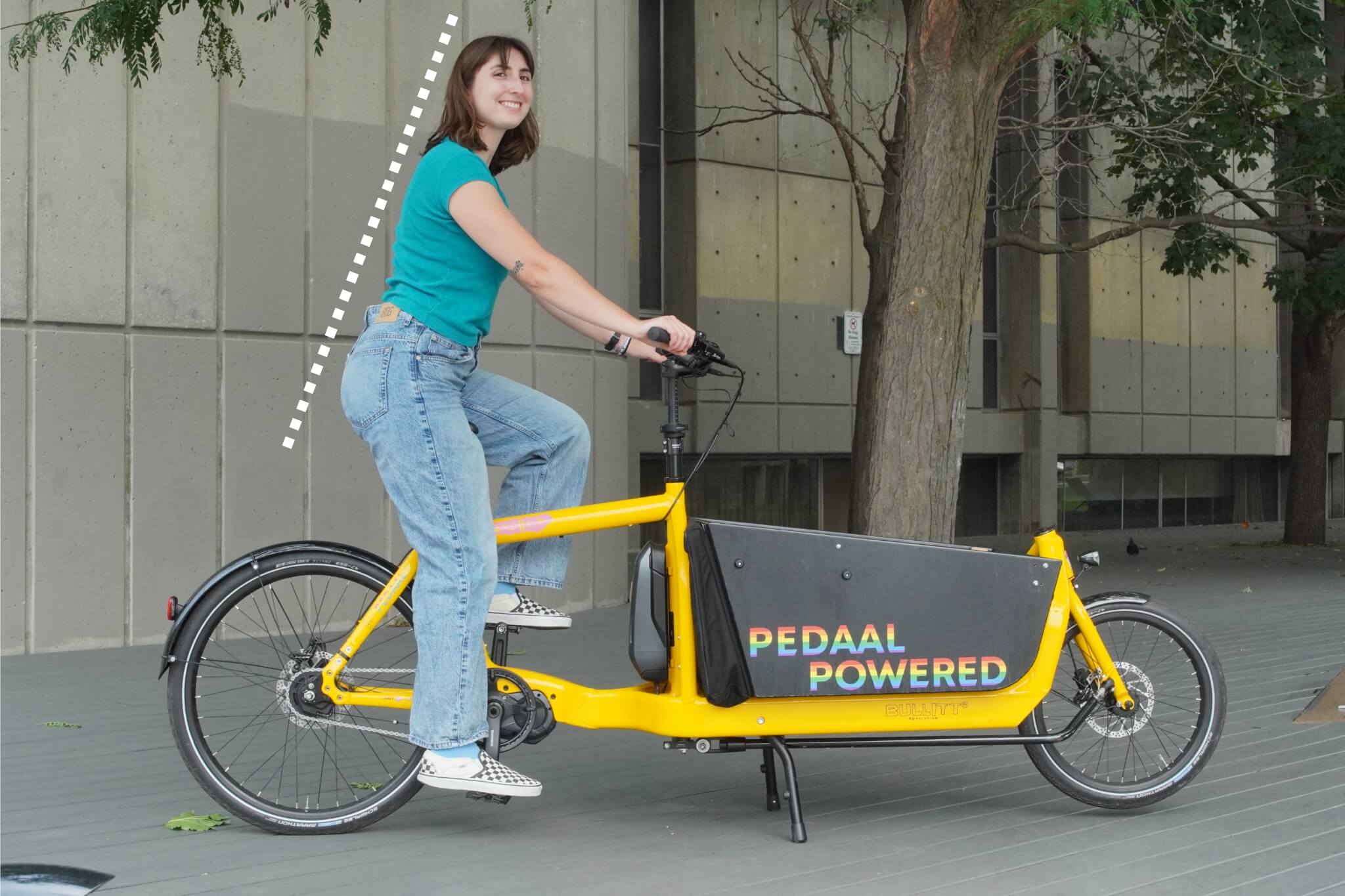
This kind of adaptability is rare. Riese & Müller’s Load bikes come close, but most others—including Trek’s Fetch, Urban Arrow, and Riese & Müller’s Transporter—lock riders into a single upright position. That might feel friendly at the shop, but it doesn’t scale well with speed or heavier loads. If you want the flexibility of a low center of gravity with the posture you choose, the Bullitt is in a league of its own—and at half the weight of an Urban Arrow, it’s not even close.
In the Box: Where Bullitt Takes a Minor Penalty
Even the best teams take a hit now and then. With Bullitt, it’s family capacity. If they are in the penalty box its because their box isn’t big enough. But when they build it, expect the best. Nobody thinks outside the box like Bullitt. Bullitt grew up in the gritty 1980’s Copenhagen streets before the present bike-lane boom. By the time the kids grew up, they could already ride to school on pristine bicycle highways. This is true for most brands of cargo bikes, even the SUV-sized Urban Arrow needs a second bench once kids hit seven.
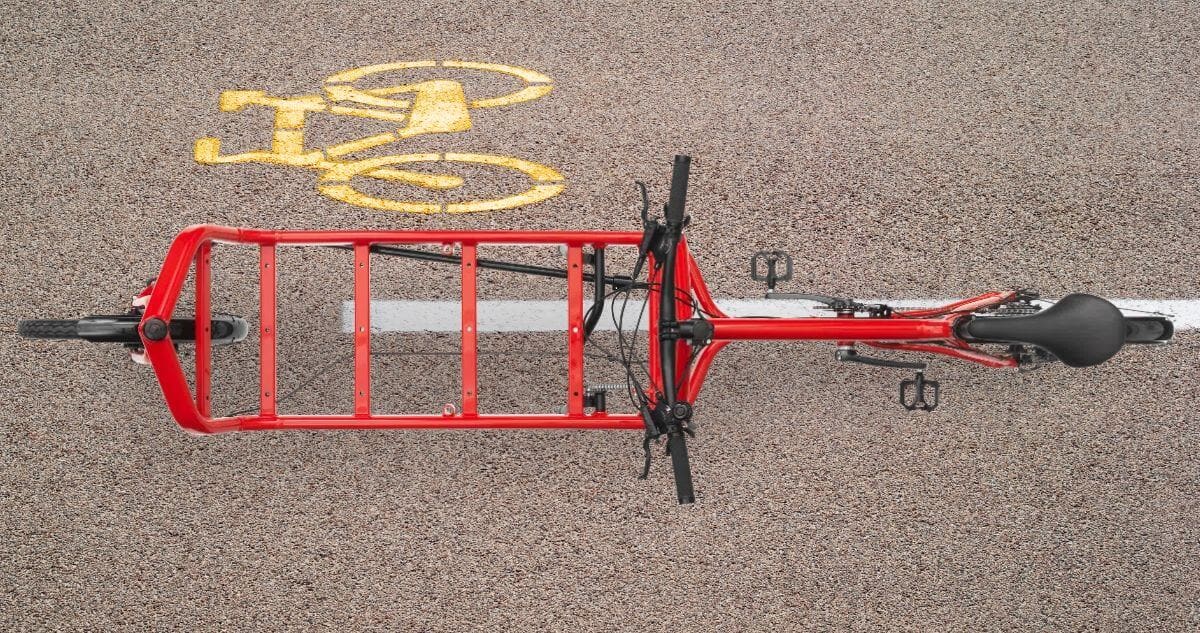
But here’s the twist: the Bullitt’s flatbed can take any box width. That’s something you can’t do with bikes like the Riese and Muller Transporter or Urban Arrow, because the box is part of the bike. The closest competitor is the Riese and Muller Load; their bike is also sold with an open flatbed. But, this flatbed is delimited in size by welded sidewalls that prevent any sort of third-party solution. So, you’re just as stuck.
Luckily, companies like Bullitt who take engineering seriously have lots of engineers following them. The great thing about a Bullitt is that it’s flatbed chassis can take any width of box (FedEx has exploited this with quite a wide box). And, there are companies who make wider boxes for bigger kids, including our friends at Splendid Bicycles in Portland, Oregon, Rad3 in Germany, Madjax in the UK, and Convoy out of Germany. Unfortunately, there is no retailer margins for such products so we cannot source them ourselves. Bullitt has promised a bigger box, so until then, it’s a two-minute minor with the best line of engineers on the penalty kill.
Final Score: Bullitt Wins in a Blowout
When it comes to performance, weight, power efficiency, versatility, and ride feel — Bullitt dominates. Urban Arrow makes a strong case in bike-lane-rich environments. Riese & Müller overengineers for problems most riders don’t have. And Trek? Well, North America needs more domestic contenders, but the Fetch isn’t it yet.

This isn’t just about specs — it’s about feel, use-case, and longevity. The Bullitt is more than a cargo bike. It’s a precision tool, a nimble commuter, a grocery hauler, a family carrier, and a design that earns the crown again and again. Game over.
Final Minutes In The Last Mile
Cargo bikes aren’t just an alternative – they’re a total rethink of what short-range transport can be. They win by being lighter, faster, safer, and more adaptable to daily life. They’re not built to outgun cars on the open road; they’re built to beat them in the tight, chaotic corners of city living. Whether you’re picking up a kid, a crate, or a coffee, the best cargo bike isn’t the one with the most features – it’s the one that gets out of your way and into your life. And when the buzzer sounds, it’s clear: the Bullitt is still skating circles around the competition.
Interested in a Bullitt? Book a remote or in-store sales appointment here! Or, shoot us an email at info@pedaal.com
